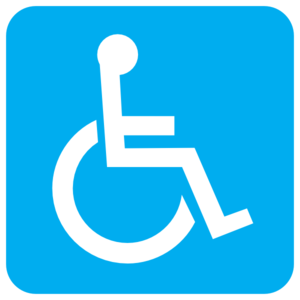Jump to a specific Assistance Dog description:
Therapy Dogs, Service Dogs, and Emotional Support Dogs
Various types of assistance dogs
- Guide Dogs
- Service Dogs for Psychiatric Disabilities
- Service Dogs for Mobility
- Service Dogs for Hearing Alert
- Service Dogs for Seizure Alert/Seizure Response
- Service Dogs for Diabetes Detection and Alert
- Service Dogs for Medical Alert/Medical Response
- Service Dogs for Autism
Therapy Dogs, Service Dogs, and Emotional Support Dogs
It’s imperative to grasp the distinctions between Therapy Dogs, Service Dogs, and Emotional Support Dogs. The disparities between Service Dogs and Therapy Dogs are quite evident, both in terms of the services they offer and their legal standing. The terms “Service Dog” and “Therapy Dog” should not be used interchangeably; they are distinct. According to Federal Law, a Service Animal is not considered a pet. The Americans with Disabilities Act (ADA) defines a Service Animal as an animal that has undergone individual training to provide assistance or perform tasks for the benefit of a person with a physical or mental disability that significantly impairs one or more of the person’s major life functions.
Therapy Dog
A Therapy Dog undergoes specialized training to respond to specific commands, offering comfort and affection to individuals in various settings, such as long-term care facilities, hospitals, retirement homes, schools, mental health institutions, and even high-stress environments like disaster areas. Their primary role is to provide people with animal companionship, regardless of whether those individuals have a disability. Therapy Dogs actively participate in animal-assisted activities and animal-assisted therapy.
Typically, the person handling a Therapy Dog is the dog’s owner, who considers the dog a personal pet. These dogs often collaborate with their owner/handler during therapy sessions. The handlers of Therapy Dogs may include healthcare professionals employed at a specific facility or dedicated volunteers.
There are several organizations that train Therapy Dogs, and these dogs provide an invaluable service by visiting hospitals, VA centers, nursing homes, schools, etc. to offer comfort and companionship to others with their handlers. Resources that may be helpful are Therapy Animals of San Antonio and Pet Partners (previously known as the Delta Society). Therapy Dogs do not provide assistance for their handler, and they do not have the same accessibility rights as Service Dogs.
Service Dog
A Service Dog is a highly trained canine companion intended for use by the client themselves to aid in their personal rehabilitation. These dogs are specialized to assist clients dealing with a range of conditions, including PTSD and other psychological disorders, autism, mobility challenges, hearing impairment, epilepsy, diabetes detection, medical alert, and more. Service Dogs are granted access to all public spaces and are allowed on airlines, provided they adhere to the established Service Dog policy, which entails not engaging in excessive barking and avoiding aggressive behavior. The only locations that hold the legal right to refuse entry to Service Dogs are places of worship, hospital sterile areas, and designated areas on military installations. Service Dog Express is committed to assisting its clients in addressing any access-related challenges they may encounter, including situations involving places of worship.
Emotional Support Dog
An Emotional Support Dog, also known as an Emotional Support Animal (ESA), is a domesticated animal that offers therapeutic support to an individual with a disability through companionship, non-judgmental positive regard, affection, and a sense of purpose in life. If a doctor determines that a client with a disabling mental illness would benefit from the presence of an ESA, the doctor can issue a letter supporting the client’s request to keep the ESA in housing designated as “no pets” or to travel with the ESA in the cabin of an aircraft.
ESAs differ from Service Dogs in that they are not trained to perform specific tasks. In fact, very little training is required, as long as the animal meets basic behavioral expectations common for pets. This entails being fully housebroken and exhibiting no disruptive habits, such as frequent or prolonged episodes of barking, that might disturb neighbors. The animal should not pose a threat to others or display aggressive behavior. There is no obligation for the animal to respond to basic commands or perform specific tasks, as ESAs are typically not taken to places where pets would not ordinarily be allowed without prior permission, with the exception being air travel in the cabin of an aircraft, even if the airline does not typically accommodate pets.
Various types of assistance dogs
While many people are familiar with Guide Dogs, those that assist people with vision loss, not as many people are aware of the other types of assistance dogs working today. Here is a description of the various types of assistance dogs:
Guide Dogs – Assist people with vision loss, leading these individuals around physical obstacles and to destinations such as seating, crossing streets, entering or exiting doorways, elevators and stairways. (Service Dog Express does not train Guide Dogs)
Service Dogs for People with Psychiatric Disabilities (according to the ADA, they are simply called Service Dogs – not Psychiatric Service Dogs). The effect of Service Dogs on the parts of the brain that are “misfiring” due to trauma, anxiety, depression, etc., are NOT purely anecdotal. SPECT Scans, PET Scans, and Functional MRIs have clinically proven that Service Dog and the training process associated with it LITERALLY change the brain. These Service Dogs a ssist and alert people with many psychiatric and emotional disorders, including PTSD, TBI, anxiety, depression, bipolar disorder, ADHD, schizophrenia, etc. This type of Service Dog can provide a sense of security, calming effects (Deep Pressure Therapy), and physical exercise that can make a positive difference in the life of those that suffer with PTSD and other psychiatric disorders. Training may include providing environmental assessment (in such cases as hypervigilance, paranoia or hallucinations), signaling behaviors such as interrupting repetitive or injurious behavior or reorienting clients during flashbacks, and guiding the client away from stressful situations. These Service Dogs can help a client remain calm by preventing people from crowding (performing front, back, and side “covers”) around or rushing up behind the client in public places, which will provide a comfortable space for the handler. The dogs can also help adjust the “feel good” neurotransmitters in the brain – serotonin, oxytocin, dopamine, etc. and can help lower blood pressure and tachycardia. See http://www.iaadp.org/psd_tasks.html for a list of tasks that these remarkable dogs can do, and find which ones you, as the handler, feel will be most helpful.
Service Dogs for Mobility – Mobility Service Dogs increase the independence of a person who uses a wheelchair, has trouble standing, has difficulty maintaining a steady gait, and/or with ambulating. They perform tasks such as steadying their handler, helping to “brace” if a person falls and needs help getting back up, retrieving dropped items, turning lights on and off, carrying items in a dog backpack, getting help if someone falls, helping people get up from seated positions or into seated positions, opening and shutting doors, pulling a wheelchair chair up inclines and ramps and for short distances, (ONLY if the size of dog and weight of handler allows for this) etc.
– Mobility Service Dogs increase the independence of a person who uses a wheelchair, has trouble standing, has difficulty maintaining a steady gait, and/or with ambulating. They perform tasks such as steadying their handler, helping to “brace” if a person falls and needs help getting back up, retrieving dropped items, turning lights on and off, carrying items in a dog backpack, getting help if someone falls, helping people get up from seated positions or into seated positions, opening and shutting doors, pulling a wheelchair chair up inclines and ramps and for short distances, (ONLY if the size of dog and weight of handler allows for this) etc.
Service Dogs for Hearing Alert – Alert people with hearing loss to the presence of specific sounds such as doorbells, telephones, crying babies, sirens, another person, buzzing timers or sensors, knocks at the door or smoke, fire and clock alarms through operant conditioning.
Service Dogs for Seizure Alert/Seizure Response – Seizure response dogs are specifically trained to help someone who has epilepsy or a seizure  disorder. The theory is that dogs can smell a seizure coming on about 30 minutes in advance (prediction), and after the seizure, they can respond (response). Tasks for seizure dogs may include, but are not limited to:
disorder. The theory is that dogs can smell a seizure coming on about 30 minutes in advance (prediction), and after the seizure, they can respond (response). Tasks for seizure dogs may include, but are not limited to:
- Summoning help, either by finding another person or activating a medical alert or pre-programmed phone.
- Pulling potentially dangerous objects away from the person’s body.
- “Blocking” to keep individuals with absence seizures and complex partial seizures from walking into obstacles, streets, and other dangerous areas that can result in bodily injury or death.
- Attempting to rouse the unconscious handler during or after a seizure.
- Providing physical support to the handler by supporting the back and head (and the secondary benefit of emotional support once the handler starts to “come to”).
- Carrying information regarding the dog, the handler’s medical condition, instructions for first responders, emergency medication, and oxygen.
Additionally, some dogs may develop the ability to sense an impending seizure. This behavior is usually reported to have arisen spontaneously and developed over a period of time. There have been several clinical studies done where dogs were trained to alert to impending seizures by using reward-based operant conditioning. Interestingly, some dogs “naturally” alert to impending seizures. We have noticed this with some of our clients who have co-existing disabilities. After years of research, clinicians have found that dogs that alert to seizures/epilepsy receive the necessary signals through the BREATH of the handler. This is exciting and long-sought after information. Trainers will work with clients on breathing techniques with your dog and collecting salivary samples to use as operant conditioning.
Service Dogs for Diabetes Detection and Alert – Diabetic alert dogs are trained to give a clear, previously-defined alert signal when its handler is experiencing a hypoglycemic or hyperglycemic episode. These dogs have noses that are thousands of times more sensitive than the human nose and have been reported to detect a change in blood sugars levels through metabolites given off by the skin and the breath of the diabetic up to 30 min prior to a glucose meter, or a continuous glucose monitor. The dog’s natural scenting ability paired with a high level of training helps to improve glucose control by “alerting” their handler, going to “get help” if the handler is seriously impaired, “retrieving” insulin from refrigerators, etc. This improves the handler’s quality of life and gives both diabetics and their loved ones peace of mind.
Service Dogs for Medical Alert/Medical Response – Alert to many different medical conditions, such as those mentioned above (Diabetes, Epilepsy) Autoimmune Diseases (Lupus, Rheumatoid Arthritis, Multiple Sclerosis, etc, Heart Disease (changes in pulse rates, blood pressure increases and decreases), Addison’s Disease, Autonomic Dysfunction, POTS (Postural Orthostatic Tachycardic Syndrome), Ehlers-Danlos Syndrome, etc. Many dogs also alert to certain cancers, such as early stage ovarian cancer, breast cancer, and lung cancer. See Pine Street Foundation.
 Service Dogs for Autism – Assist with children who are autistic. Tasks for the autistic service dog include keeping the client calm, and applying Deep Pressure Therapy during or before meltdowns. Children with autism have a hard time focusing, communicating, and verbalizing, yet many can work more efficiently with a Service Dog nearby. Tasks DO NOT include stopping the child at intersections, stopping a child from bolting, bringing the child back to the human or house when the child refuses or cannot understand verbal words. This is a liability for both the dog and the child/adult with autism. We do not support “tethering” dogs to those with autism. These dogs are often fitted with two leashes — one for the child to hold and another one for a parent/handler/caregiver to hold. The dog will accept commands from the parents, thus providing a new sense of freedom and safety for the child and the parent. Some children have been known to give verbal commands to the dog even when they won’t speak to anyone else. Parents of autistic children MUST remember that the Service Dog does not take place of parental supervision. For autism, Service Dogs are mainly used for calming techniques, alerting parents to meltdowns, and maintaining focus and giving purpose. If for any reason an autistic child/adult could cause harm to a Service Dog during a meltdown, Service Dog Express cannot put any dog in harm’s way. Trainers will have to determine the potential success and safety rate on a case-by-case basis.
Service Dogs for Autism – Assist with children who are autistic. Tasks for the autistic service dog include keeping the client calm, and applying Deep Pressure Therapy during or before meltdowns. Children with autism have a hard time focusing, communicating, and verbalizing, yet many can work more efficiently with a Service Dog nearby. Tasks DO NOT include stopping the child at intersections, stopping a child from bolting, bringing the child back to the human or house when the child refuses or cannot understand verbal words. This is a liability for both the dog and the child/adult with autism. We do not support “tethering” dogs to those with autism. These dogs are often fitted with two leashes — one for the child to hold and another one for a parent/handler/caregiver to hold. The dog will accept commands from the parents, thus providing a new sense of freedom and safety for the child and the parent. Some children have been known to give verbal commands to the dog even when they won’t speak to anyone else. Parents of autistic children MUST remember that the Service Dog does not take place of parental supervision. For autism, Service Dogs are mainly used for calming techniques, alerting parents to meltdowns, and maintaining focus and giving purpose. If for any reason an autistic child/adult could cause harm to a Service Dog during a meltdown, Service Dog Express cannot put any dog in harm’s way. Trainers will have to determine the potential success and safety rate on a case-by-case basis.

2 thoughts on “Types of Assistance Dogs”
Comments are closed.